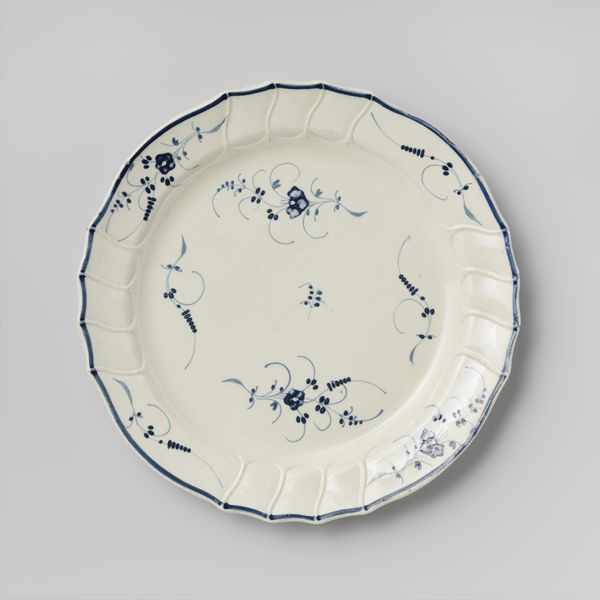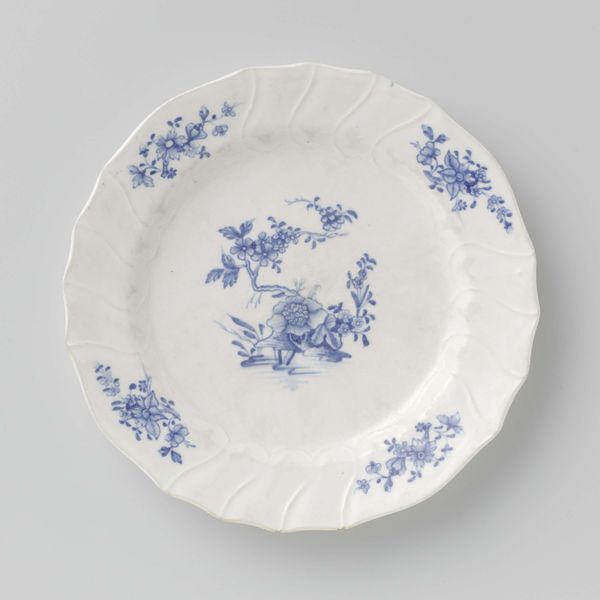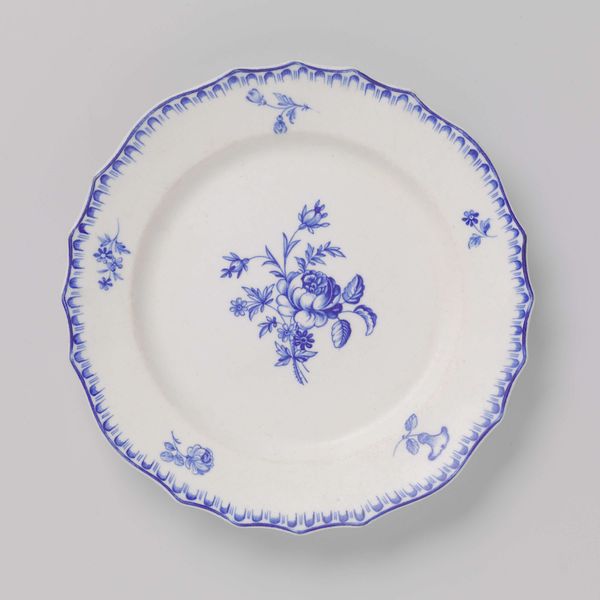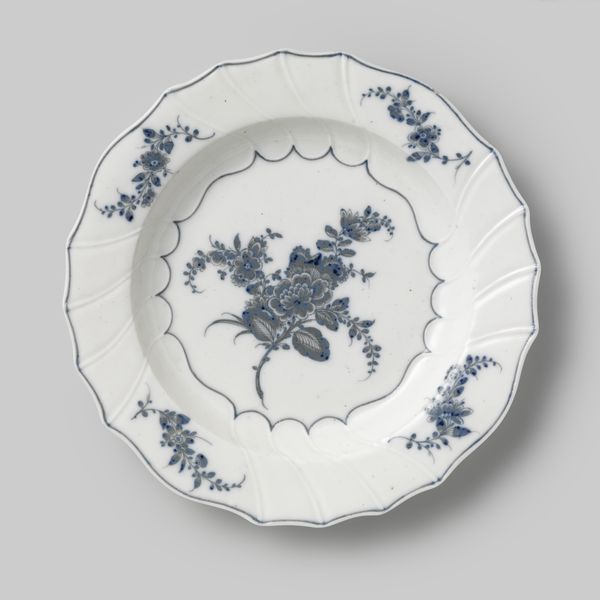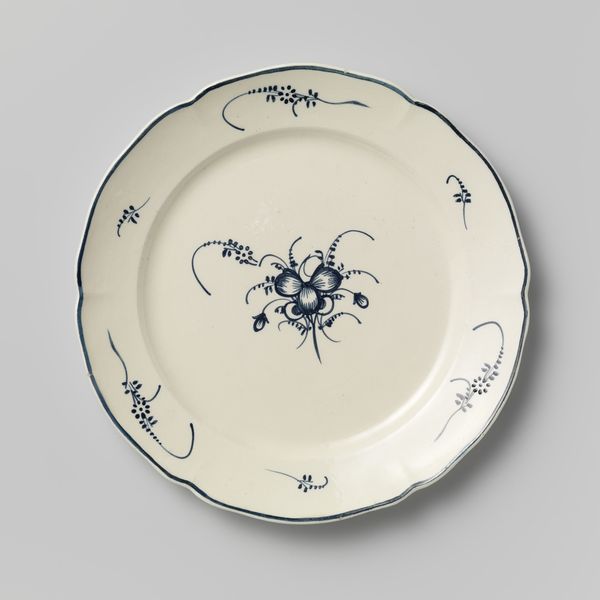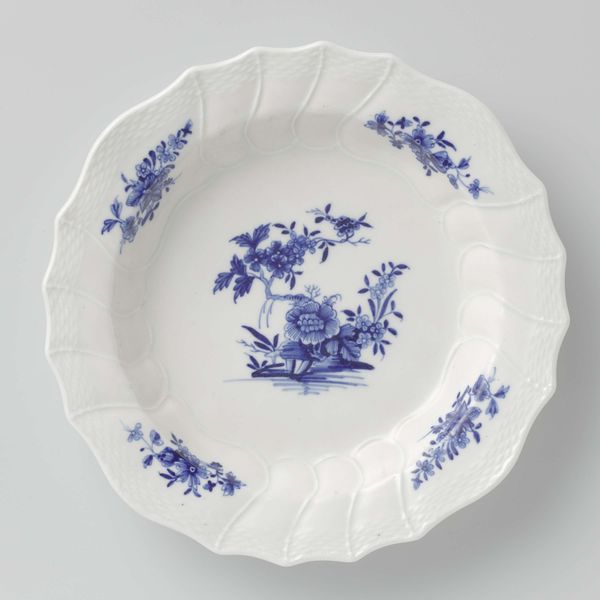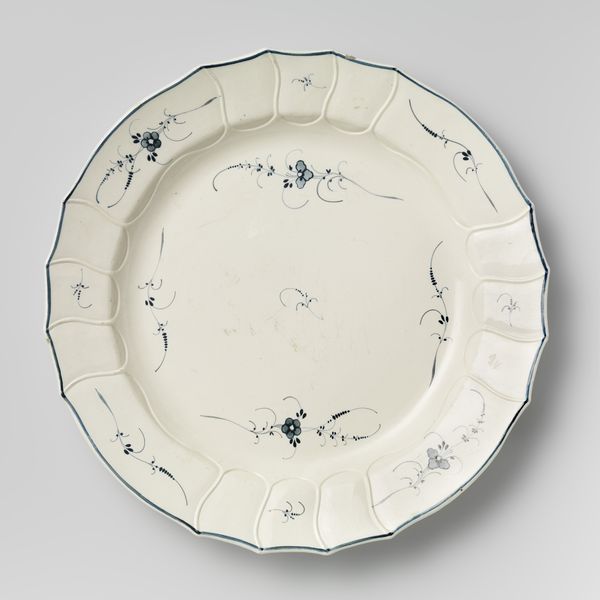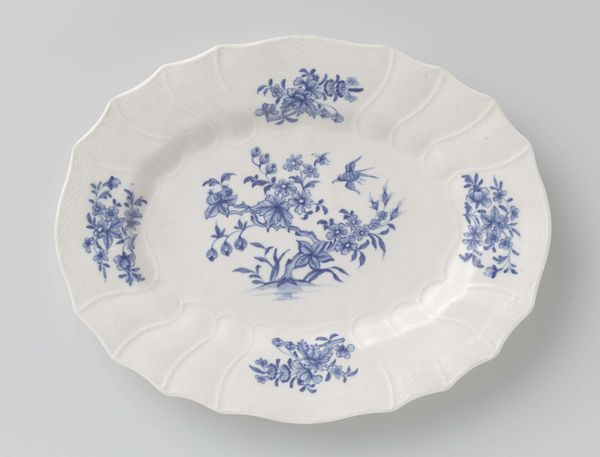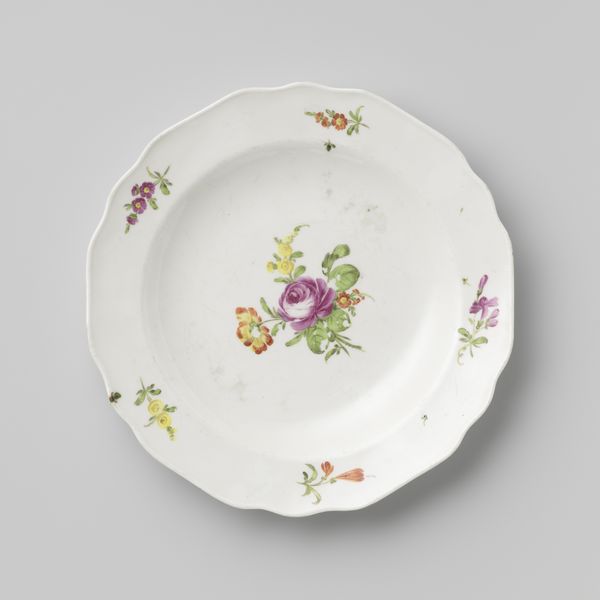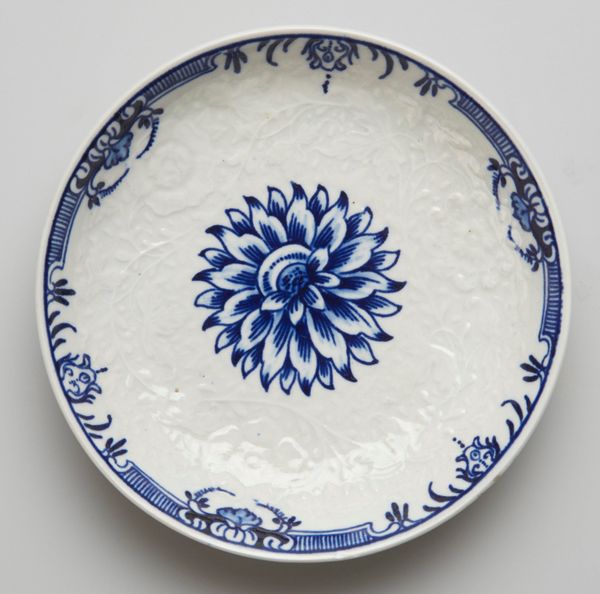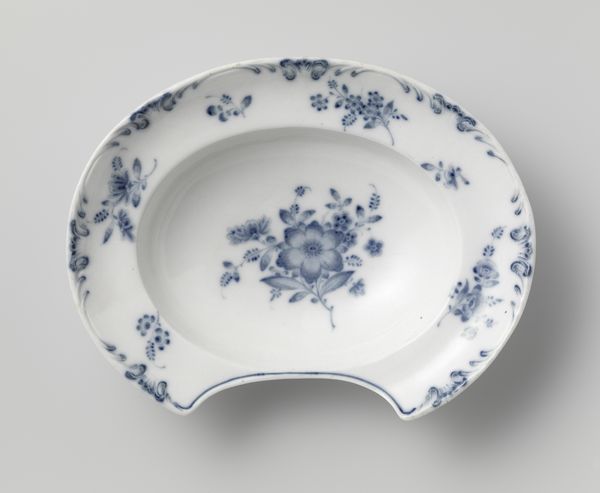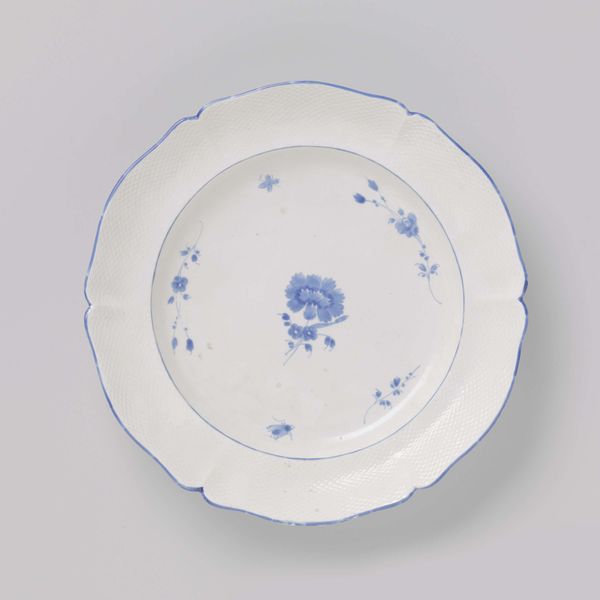
#
product photograph merchandise
#
product studio photography
#
product promotion photography
#
cake food
#
product fashion photography
#
lifestyle product photography
#
ceramic
#
graphic design product photography
#
watercolour illustration
#
product photography
Dimensions: height 3.1 cm, diameter 23.7 cm
Copyright: Rijks Museum: Open Domain
Curator: Let's discuss this plate from Boch, dating from around 1775 to 1810. The simple floral design is quite charming, don't you think? Editor: It is. This "Bord van Engels hardgebakken aardewerk, Boch faience fine" – that's a mouthful – feels so delicate despite being made of earthenware. How would you approach analyzing a piece like this? Curator: I’d focus on the materiality. The term "faience fine" itself indicates an attempt to elevate earthenware, to mimic the more refined qualities of porcelain. Look at the scalloped edges and the blue decorations – they demonstrate specific labor processes. Who was creating these designs and how was the labor divided? Was this individualized work, or factory produced? Editor: That makes me think about accessibility. Was this sort of pottery something for the wealthy, or was hard-baked earthenware allowing more people access to finer tableware? Curator: Precisely! Consider the social context: were these designs attempting to imitate luxury goods? How did the industrial processes influence its production? And how does it relate to consumption patterns during the late 18th century? Understanding the process of making and marketing these wares tells us more about how craft shifted toward industry at this time. The glaze is an important component: understanding what was used and the process in itself tells of its quality of make. Editor: So, beyond just admiring the floral pattern, we're actually looking at evidence of a changing society, through examining the means of production. Curator: Exactly! And understanding how materials, production methods, and intended consumers shaped its creation allows us to see the art more profoundly and situate its social relevance within broader market developments of its time. Editor: I never thought about analyzing ceramics this way before. Thank you. Curator: My pleasure! Materiality opens up a lot of interesting questions.
Comments
No comments
Be the first to comment and join the conversation on the ultimate creative platform.
